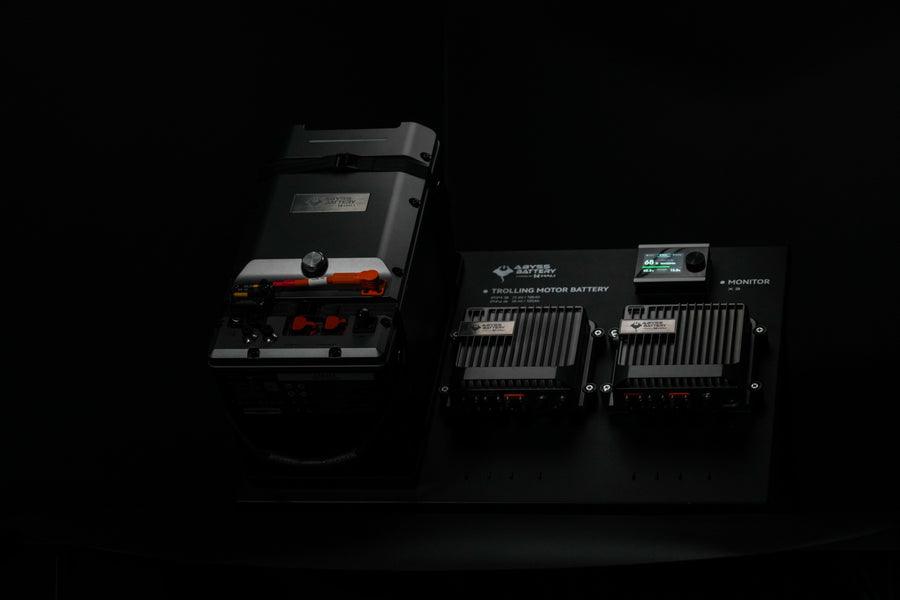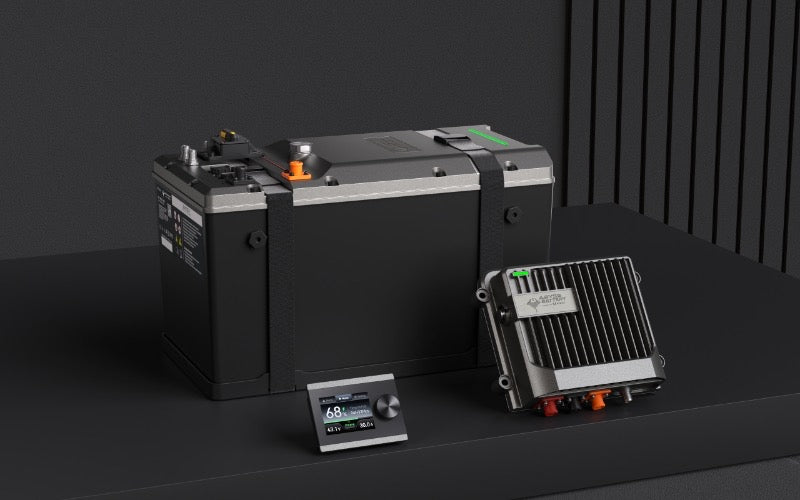Comparing Lithium-Ion to Other Marine Battery Types

Choosing the right marine battery impacts safety, performance, and protects your investment on the water. Lithium-ion batteries are quickly becoming the gold standard for boaters and professionals who need reliability and peace of mind. This guide helps you understand how lithium-ion batteries stack up against traditional lead-acid and AGM options, so you can make the best choice for your vessel and your customers.
Understanding Marine Battery Types
When comparing lithium-ion to other marine battery types, it's important to understand that each type has unique benefits and trade-offs that make it suitable for different boating needs and budgets.
Lithium-Ion
Lithium-ion batteries offer high energy density and a lightweight design that sets them apart from traditional options. A standout feature is their ability to support deep discharge, providing more usable capacity without compromising battery health or longevity.
Additionally, a sophisticated battery management system (BMS) monitors key parameters, including temperature, voltage, and current. This protects the battery from overcharging and overheating. Boaters and marine professionals can track battery status and performance in real-time from anywhere on a vessel via Bluetooth and dedicated apps.
Lead-Acid
Lead-acid batteries are a traditional, budget-friendly option that have been used in marine applications for decades. However, lead-acid batteries are significantly heavier and bulkier than modern alternatives, offering lower energy density and taking up more space on board.
They also require regular maintenance for reliable operation. Checking fluid levels, cleaning terminals, and preventing corrosion are necessary to prolong their service life. Despite these efforts, lead-acid batteries typically have a much shorter lifespan compared to lithium-ion options, often needing replacement every two years or after a few hundred charge cycles.
AGM
Absorbed glass mat (AGM) batteries are a sealed, maintenance-free variant of traditional lead-acid batteries. They're a convenient choice for boaters who want to avoid the routine upkeep required by flooded lead-acid options. Their design incorporates fiberglass mats that absorb the electrolyte to prevent leaks and increase vibration resistance — a valuable feature in rough waters.
Compared to standard flooded lead-acid batteries, AGM batteries offer a slightly longer lifespan and improved durability. This makes them popular for those seeking better reliability without a significant increase in cost. However, AGM batteries are heavier and less efficient than lithium-ion alternatives. They take up a good amount of space and don't provide the same level of energy density, rapid charging, or long-term performance as high-end lithium-ion options.
Key Performance Differences
When it comes to lifespan, each battery type offers a different level of durability:
- Lithium-ion: Up to 10 years and 5,000+ charge cycles
- Lead-acid: Typically two years and 200 to 300 cycles before significant capacity loss
- AGM: Generally around three to seven years and 1,200 cycles at 30% depth of discharge
Weight and space are critical considerations for marine applications. Lithium-ion is up to 70% lighter than lead-acid and AGM options. This frees up space on board and improves vessel efficiency and handling. In many cases, a single lithium battery can replace the need for three bulkier lead-acid or AGM batteries, reducing clutter and the overall weight on your boat.
Lithium-ion batteries deliver a consistent voltage throughout the discharge cycle. This allows onboard electronics and motors to operate at peak performance without power fluctuations. They also have faster recharge times compared to traditional batteries, which means less time waiting and more time enjoying the water. Lithium-ion options have minimal self-discharge rates, allowing them to be stored for extended periods without losing power and making them reliable for frequent and occasional use.

Safety and Certification
High-quality lithium-ion batteries are engineered with advanced safety features and must meet rigorous certification standards. This makes them a trusted choice for high-stakes marine environments with the following features:
- Integrated BMS: Monitors temperature, voltage, and current in real time. Prevents overcharging, overheating, and short circuits.
- Bluetooth and app monitoring: Battery health tracking, charge status, and performance monitoring from anywhere on the vessel. Identifies issues before they become critical.
- Certifications and testing: Compliance with standards such as The American Boat & Yacht Council lithium-ion standard and Section 38.3 of the United Nations Manual of Tests and Criteria
Total Cost of Ownership
Understanding the total cost of ownership helps justify your investment. Lithium-ion, compared to other marine battery types, may have a higher upfront cost, but its long-term value is unmatched for these reasons:
- Lasts longer than lead-acid, which reduces replacement frequency and hassle.
- Seam-sealed and waterproof, so there's no need for regular water checks or corrosion management.
- Lighter weight for improved fuel efficiency and vessel handling.
- Consistent performance reduces downtime and unexpected expenses.
Environmental Impact and Sustainability
Today's boaters and marine professionals are increasingly aware of their environmental footprint. Lithium-ion batteries offer sustainability advantages over traditional options, with fewer ending up in landfills due to their longer lifespan.
These batteries help lower greenhouse gas emissions on the water by supporting cleaner propulsion systems. Their superior energy efficiency means marine vessels can operate using less power, which further reduces their overall environmental impact. Unlike lead-acid batteries, lithium-ion options don't generate hazardous byproducts, minimizing the risk of polluting sensitive marine ecosystems.
Choosing the Right Battery
Selecting the ideal battery depends on your vessel type, usage patterns, and performance expectations. Here's a quick checklist to guide your buying decision:
- Vessel type and usage: High-performance boats, liveaboards, and long-distance cruisers benefit most from lithium. Occasional or budget-conscious users may still consider AGM or lead-acid.
- Power needs: Calculate your total amp-hour requirements for all onboard systems and consider future upgrades or additional electronics.
- Space and weight constraints: Lithium-ion batteries' compact size and light weight are ideal for maximizing space and efficiency.
- Charging compatibility: Ensure your charger and alternator are compatible with lithium technology.
- Safety and monitoring: Prioritize batteries with advanced BMS and real-time monitoring for peace of mind.
Where to Buy Premium Batteries
It's important to find a trusted supplier that can deliver product quality, warranty support, and expert guidance. Abyss Battery® partners with leading marine retailers and offers nationwide support.
Our lithium iron phosphate batteries are engineered with advanced technology and is backed by rigorous safety testing and industry certifications, ensuring peace of mind for even the most demanding marine environments. With a 10-year lifespan, Abyss Battery products deliver long-term value and dependable power for high-end boaters and marine professionals.
You can find Abyss Battery products at West Marine, a widely recognized retailer with in-store and online availability for added convenience. In addition, our nationwide dealer network provides access to expert advice, professional installation support, and responsive after-sales service so you're covered wherever your journey takes you.
Ready to Power Your Pursuit?
Experience the confidence, safety, and performance that only Abyss Battery can deliver. Our team is ready to help you explore the best in marine battery technology, whether you're upgrading your own vessel or outfitting a fleet.
Browse our collection of lithium batteries to learn more about how Abyss Battery can power your pursuit.





Leave a comment